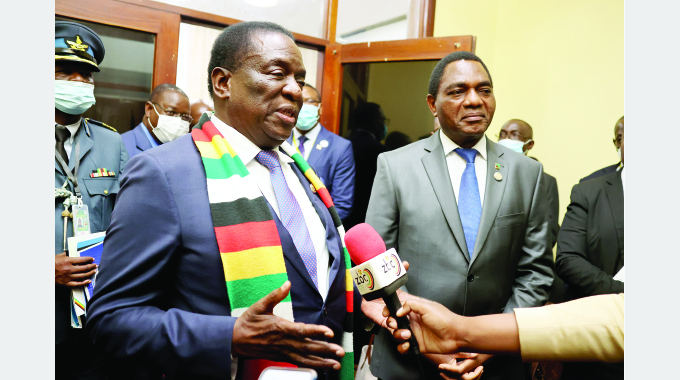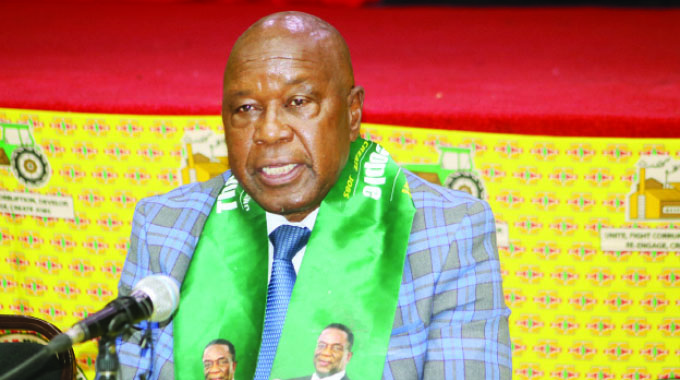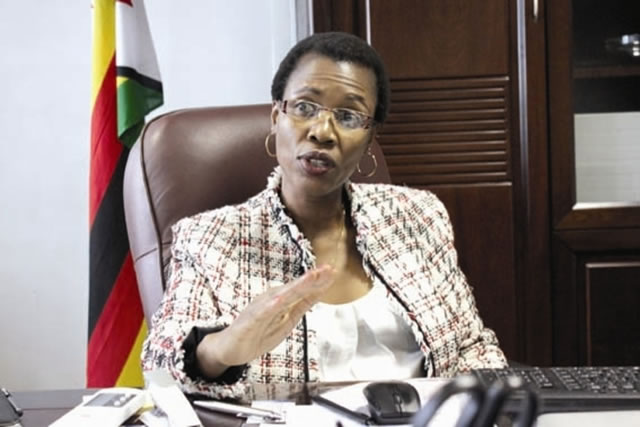EDITORIAL COMMENT: More power means more regional cooperation

One of the main results, as well as one of the main drivers, of economic development is the need for a lot of extra energy, especially efficient electrical energy, and Zimbabwe is no exception.
The second and growing requirement is for the generation of this large quantity of extra electricity to be as clean and as carbon-free as possible.
Zimbabwe is having to expand Hwange Thermal with two new large generation units coming up for commissioning over the next few months.
It will have to rebuild and fix up the older six and smaller units at that station, and will probably have to look at a second coal-fired large thermal station, simply to cope with the demand growth over the next decade.
President Mnangagwa and other leaders of developing countries have made this need for some extra coal-fuelled capacity clear in global climate talks, while at the same time making it clear that they will be seeking to exploit lower-carbon and green sources.
If natural gas is discovered by the exploration wells being drilled at Muzarabani, a large gas fuelled station could be built, probably close to the gas field.
Gas stations have around half the carbon footprint per megawatt of a coal station, so that will be gain if we can expand via gas for the shorter term.
The longer term requires greener options, and in Zimbabwe’s case this means solar and hydro. Solar is great for small scale plants such as water pump stations and businesses that operate in daylight, but has a storage problem for the really serious industrial needs.
We can store some solar power in Lake Kariba since the power station is larger than the Zambezi can supply 24/7.
We use the extra capacity to cope with peak demand and then cut right back at other times to keep the average within the limit, and Zambia, whose north bank station is now roughly the same size, does the same.
With solar we can keep the Kariba station on lower output when the sun is shining and store the extra water for the earlier and later parts of the day and more night use. But there are limits and very large batteries are expensive.
So the work being done in both Zimbabwe and Zambia to plan for the fuller use of the Zambezi and its major tributaries is important, with the Batoka Gorge project being at the top of the list.
This would be a 2 400 megawatt scheme, but largely run of river, since the Lake Batoka will have little storage, the dam mainly there to create the drop the river needs to go over to generate power.
With the Zambezi flows being very seasonal, the flood peaks and the low water flows being very far apart, Zimbabwe and Zambia do not get the full benefit of that extra 2 400MW. We get that for a few months as the floods come down, and then output decreases.
By careful management Lake Kariba, with the two oversized Kariba stations, can be the storage by cutting back a bit and letting the big lake fill in the flood season, giving enough extra water to run the power stations more generously as Batoka falls back.
So we can get a lot of benefit with the extra capacity but not quite as much as 1 200MW for each country.
So President Mnangagwa’s determination to maintain the best of good relations with Zambia, a country he knows very well, is important and it appears from their latest talks, this time at the SADC summit in Kinshasa this week, he and President Hakainde Hichilema are on the same wavelength and keen to push ahead with that major Zambezi scheme.
Batoka is not an instant project. It takes several years to build the sort of dam required, hollow out the power stations near where the water comes out and install the very large turbine and generator units.
So we need to keep the present thermal expansion programme going and in any case we will need that thermal base-load capacity, especially in drought years.
The growing SADC ties and the rapidly growing stability in the DRC now open up the ultimate long-term hydro-supply for Southern Africa, what is called Grand Inge at the Inge site between Kinshasa and the ocean where the Congo River drops from the plateau to the sea through a series of rapids and small falls. Inge is the best hydro-electric site in the world.
Fully developed Grand Inge is estimated to have the capacity to generate 40 000MW, almost doubling SADC output of electricity.
The final cost is fairly dramatic, around US$80 billion has been mentioned, but the cost per megawatt, US$2 million/MW, is significantly cheaper than almost any other option and the project divides into seven independent stages.
DRC already has two smaller stations at the site, Inge 1 with 351MW and Inge 2 with 1 424MW.
Detailed plans have been drawn up for Inge 3, with 4 800MW, and that would be the first of the seven stations making up Grand Inge. South Africa has already said it would like to buy half the Inge 3 output.
The Congo, by the time it reaches Inge, is an interesting river. The catchment is in both hemispheres, so there is not much difference between high and low water flows, and the best scientific forecasting suggests that flows will be roughly the same as now even with global warming. So it looks like a secure source of power.
The DRC is keen to move forward and develop the world’s greatest single source of electricity, and easily the greatest single source of green electricity.
Although everyone talks of exporting Inge power as far as Egypt, and at one stage even to Europe, Southern Africa as its economy doubles could use the lot.
This is why the region, using the growing integration through SADC, should be looking at Grand Inge in its seven stages as a regional project with each mainland SADC country ready to help with the investment and providing the guaranteed markets.
Obviously the DRC will want a royalty, even if some investment is external, but hydro stations have the lowest operational costs although high capital costs.
If we plan for Grand Inge we can also work out the transmission line routes, and Zimbabwe could host one line with a significant percentage of the potential route running across wildlife land so avoiding some of the translocation and other costs, especially if we plan now.
Grand Inge needs to be backed by the fuller use of the Zambezi basin and other power sources, but can be a major foundation of the incredible amount of extra power the region will need as it grows its economies.











Comments